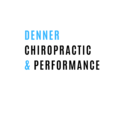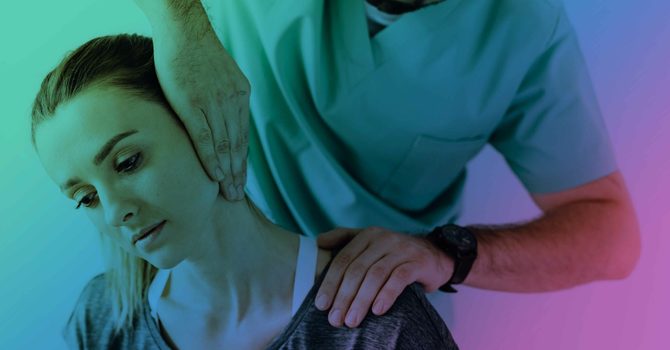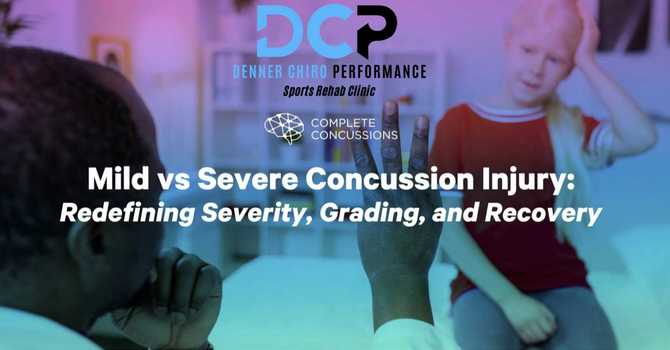
Introduction
Sports medicine professionals face a myriad of challenging questions when guiding an athlete's return to competitive action following a concussion. The primary concerns revolve around the correct measures for assessing readiness, ensuring metabolic recovery, and safe reintegration into sporting activities post-traumatic brain injury. How do we confidently navigate the transition of our athletes back into sport? What reliable measures can we utilize to ascertain their preparedness?
How can we ensure a secure return while also gauging their metabolic recovery? These are all critical questions that clinicians grapple with when determining the right time for an athlete to re-engage in full-contact or high-intensity sporting activities after a recovery protocol.
In this article, we're going to delve into the Chicago Blackhawks Test, often referred to as the Gapski-Goodman Test (GGT). We'll explore why this test is an invaluable tool for the safe reintegration of elite athletes into their respective sports. More than that, we'll provide a step-by-step guide on how to properly administer this test, equipping you with the knowledge you need to incorporate this groundbreaking method into your practice today!
Chicago Blackhawks Test (The Gapski-Goodman Test)
The Gapski-Goodman Test, alternatively known as the Chicago Blackhawks Test, is a brilliant tool created by Mike Gapski, the head athletic trainer, and Paul Goodman, the strength and conditioning coach of the Chicago Blackhawks. This is not just any physical exertion test—it's specifically designed to gauge whether top-tier athletes are prepared to return to high-risk sports after a concussion injury.
This test is exclusive to elite athletes ready to re-immerse themselves in the rigorous world of high-risk sports. When we refer to 'high-risk sports', we're referring to sports with a high likelihood of the occurrence of concussion injuries. Although our list is not comprehensive, it provides representative examples of sports that, based on statistical evidence, have a heightened probability of such incidents. (1) Men’s Rugby (3.00 per 1,000 athlete exposures) Men’s American Football (2.5 per 1,000 athlete exposures) Women’s Ice Hockey (2.27 per 1,000 athlete exposures) Men’s Ice Hockey (1.63 per 1,000 athlete exposures) Women’s Soccer (1.48 per 1,000 athlete exposures)
Modified Chicago Blackhawks Test
What's impressive about the Gapski-Goodman Test is that it provides athletes and their medical staff with a solid, science-backed understanding of their readiness. This way, they can stride back onto the field, the rink, or the pitch with full confidence that they're physically prepared for the challenges ahead.
Complete Concussion Management has crafted a modified version of the dynamic Gapski-Goodman Test to better cater to athletes participating at less rigorous levels or in sports with different physical demands. Let's consider baseball, for instance. The cardiovascular demands of an elite soccer player and a top-tier baseball player vary greatly—it's just the nature of the sport.
When you're crafting a return-to-play protocol, it's essential to account for these differences. A baseball athlete might appear to 'fail' the test compared to others, not necessarily because their concussion recovery is incomplete, but simply because the intense physical demands of the test don't align with their sport-specific conditioning. Tailoring the assessment to the athlete's specific sport can ensure a more accurate evaluation of their readiness to return to the field.
Buffalo Treadmill Test vs The Chicago Blackhawks Test
In our approach to concussion management, one of the first aspects we address and treat is blood flow dysregulation. This crucial component of care is managed through sub-symptom threshold exercise.
After a patient successfully completes the Buffalo Treadmill Test, they're given the green light to engage in exercise up to their physiological maximum. However, while they may feel ready to dive back into full-contact play, that's not always the case.
The Buffalo Treadmill Test is excellent at identifying issues with blood flow dysregulation, but it doesn't quite cut it when it comes to predicting the physical and situational demands of a sporting event.
There are a host of variables to consider:
- Heart rate variability
- Positional changes
- Multi-directional movements
- Dynamic muscle activation
While the Buffalo Treadmill Test is the gold standard for managing blood flow dysregulation with its steady-state cardio approach, it doesn't quite measure up to the complex, high-level demands of a sporting event. This is where tools like the Gapski-Goodman Test can provide a more comprehensive assessment.
What Does the Research Show
Let's now discuss some research that has been conducted in this testing method. A pivotal study was conducted by Marshall et al in 2018 (2) - the first ever to focus on the Gapski-Goodman Test. The researchers examined 759 athletes across a broad spectrum of sports, putting them through the rigors of the Gapski-Goodman Test after they had fulfilled the necessary return-to-play criteria.
Interestingly, the study revealed that 14.6% of athletes, who were otherwise symptom-free and had completed all return-to-play phases, failed the Gapski-Goodman Test. These findings underscore the reality that some athletes may still be dealing with an incomplete recovery, despite having navigated through the standard return-to-play stages successfully.
This research accentuates the crucial role of the Gapski-Goodman Test in effectively determining an athlete's readiness to return to sport. The correct application of the GGT can bolster confidence in the decision-making process of healthcare providers and physical therapists, ensuring a higher rate of successful recovery and safer reintegration into sporting events.
How To Administer The Chicago Blackhawks Test
As we've previously mentioned, the Gapski-Goodman Test, also known as the Chicago Blackhawks Test, is a robust evaluation tool, designed specifically for elite athletes participating in high-risk sports. When considering the right moment to implement this rigorous physical exertion test, it's crucial to take into account the specific demands placed upon the athlete in question.
In the following sections, we'll detail the full testing procedure of the Gapski-Goodman Test, and also provide a modified version tailored for amateur and youth athletes, as well as those involved in lower-risk sports. This comprehensive overview aims to equip you with the right tool for the right athlete, ensuring optimal results in concussion recovery and return-to-play readiness. Please be sure to download our free Blackhawks Test template to use in your clinic!
Before we discuss the specifics of the testing procedure, let's highlight the necessary tools and considerations for a successful assessment. One important thing to note is that the test can take between 30 to 40 minutes. Allocating adequate time not only ensures a smooth and unhurried process, but also contributes to the overall accuracy and efficiency of the test.
Other materials needed include a standing Stationary Bike (Can effectively measure RPM and 20 resistance levels) Ample Space for Plyometric drills Time recording device (Phone, watch, etc)Heart rate monitor Before kicking off the test, the athlete should spend a couple of minutes at rest to establish a baseline for their resting heart rate. This pause provides an excellent opportunity to walk the athlete through the testing procedure. It's also important to emphasize the need for their honest reporting of any concussion symptoms that might arise during the test.
The Execution of the Chicago Blackhawks Test (The Gapski-Goodman Test)
The test we're discussing can be effectively segmented into two core phases. Phase One encompasses the cycling component of the test, wherein a stationary bike is employed. The primary objective here is to simulate high-intensity cardiovascular performance and assess heart rate variability.
Blood flow regulation plays a critical role in post-concussion care, and this stage provides valuable insights into any persisting dysfunction. Moreover, by simulating high-intensity efforts, we can evaluate physiological recovery and replicate in-game performance scenarios.
Phase Two involves a series of plyometric exercises specifically designed to evaluate multisensory integration. In simpler terms, this refers to how we perceive and process external stimuli and use that information to effectively execute various exercises. The exercises under discussion will incorporate elements of jumping, twisting, and footwork. This multifaceted approach allows us to effectively assess the patient's visual, vestibular, and musculoskeletal systems, while also gauging their overall physical conditioning.
Phase 1: Bike
The cycling component of the test is structured into three distinct stages, each serving a unique purpose. Below, we offer a brief explanation of these stages. It's important for clinicians to note that throughout this test, the participant should aim to maintain their RPM between 90-95 for the standard version of the test, and 80-85 for the modified variant.
The test commences with a three-minute warm-up, where the patient gradually works towards achieving their target RPM. Following the completion of the warm-up phase, the test transitions into Stage 1, referred to as 'Hill Climbs.'
In this stage, clinicians will gradually increase the bike's resistance level every 30 seconds to a set point and then gradually decrease the resistance.
Stage 2 is characterized by an alternation between high-intensity and low-intensity cycling intervals, designed to emulate sprinting and the associated variable heart rate patterns. The setup of Stage 3 mirrors Stage 2, the difference is that Stage 3 will consist of high-intensity sprints followed by alternating periods of complete rest.
The distinction between the full and modified versions of the Gapski-Goodman Test lies in the intensity levels. The modified variant features less strenuous intensities, making it suitable for patients participating in sports with less demanding physical requirements.
Phase 2 - Plyometric Exercises
Phase 2 of our assessment process incorporates a sequence of plyometric drills, subdivided into four specific stages.
In the first stage of this phase, the focus is on lateral hops over hurdles. This drill is repeated four times with brief intervals of rest between each set. For those participating in the modified version of the test, a lateral step-over substitutes the hop, allowing for less strenuous exertion.
Stage 2 demands the execution of burpees, with three sets of ten seconds each. The modified approach permits patients to exclude the push-up segment from the burpee routine.
In stage 3 participants will perform a lateral hop onto a box standing between 16 to 20 inches in height. The modified alternative replaces the hop with a less demanding lateral step-up.
The final exercise in this phase requires participants to execute a 180-degree rotational jump. This entails a jump from a standing position that results in the participant facing the opposite direction. This complex drill aids in evaluating a participant's positional sense, stability and neck muscular function.
Special Considerations
Here are some special considerations to keep in mind during the testing procedure. This test is designed to evaluate an athlete's physical readiness, not to judge their skill execution. As long as the athlete is giving their best effort to complete the test, it should continue. The focus is not on the quality of the exercise performance but on the level of effort exerted.
Another point to consider is that the tensions mentioned in the testing protocol serve as a guideline. Every athlete is unique, so a "one-size-fits-all" approach may not always be the best fit. For example, if an athlete is finding it too challenging to pedal the bike, they might not be reaching their maximal exertion. In this scenario, it would be appropriate to slightly reduce the tension, enabling the athlete to achieve their maximum effort level more effectively.
The Bottom Line
Mild traumatic brain injuries (mTBI), including sport-related concussions, present a significant obstacle within the field of sports medicine. The Chicago Blackhawks Test is an integral instrument employed to navigate the complex return-to-play process for elite athletes participating in high-risk sports.
Furthermore, an adapted version of this test is available to assist with decision-making regarding the return of youth athletes, amateur participants, and those engaged in lower-risk sports. The Gapski- Goodman Test (GGT) is a meticulously structured assessment that evaluates physical exertion levels while closely observing potential exacerbation of concussion symptoms such as headaches, balance problems, nausea, and neck pain.
The GGT delivers to healthcare providers invaluable insights into an athlete's brain function, metabolic state, and the overall progression of healing post-head injury. Professionals in sports medicine and physical therapy can leverage the Buffalo Treadmill Test to streamline concussion rehabilitation, offering a more personalized treatment plan for athletes, with particular attention to symptom severity.
Physical activities, ranging from light physical activity to aerobic exercise, play a vital role in active rehabilitation, fostering brain recovery following traumatic incidents.
Once an athlete has been given clearance to exercise and has undergone a comprehensive recovery process, the GGT can be performed. The GGT utilizes a stationary bike and adequate space, making the test both highly accessible and time-efficient for most medical settings.
This method is also particularly useful for the treatment of post-concussion syndrome and persistent symptoms. However, it's essential to keep in mind that this is merely one component of a comprehensive approach, which could also include additional assessments, neurocognitive tests, and an evaluation of the athlete's holistic clinical picture when deciding on full medical clearance and return to sport.
Denner Chiropractic & Performance | Charlotte, North Carolina | Concussion
At Denner Chiropractic & Performance, located in Charlotte North Carolina our concussion doctors specialize in the acute diagnosis, treatment, and rehabilitation of concussion injuries. Our rehab chiropractic care incorporates rehabilitation, joint manipulation, soft tissue, and dry needling to help you achieve pain-free movement in life and sports. Dr. Denner is certified through Complete Concussion Management (CCMI). CCMI is the world leader in evidence-based concussion treatment and rehabilitation. Denner Chiropractic & Performance has gone through the rigorous process of being a certified concussion clinic through CCMI. We are more than happy to discuss any concerns or questions you have about your condition or how we can help. Located on our main page or in our resource library tab is a sign-up for a free Discovery Call. During this time we will get to know you and your pain points. Let’s see if we are the right provider for you, schedule your Discovery Call today!
Citations
Prien A, Grafe A, Rössler R, Junge A, Verhagen E. Epidemiology of Head Injuries Focusing on Concussions in Team Contact Sports: A Systematic Review. Sports Med. 2018;48(4):953-969.Marshall CM, Chan N, Tran P, DeMatteo C. The use of an intensive physical exertion test as a final return to play measure in concussed athletes: a prospective cohort. Phys Sportsmed. 2019;47(2):158-166.

Denner Chiro Performance
Contact Me



